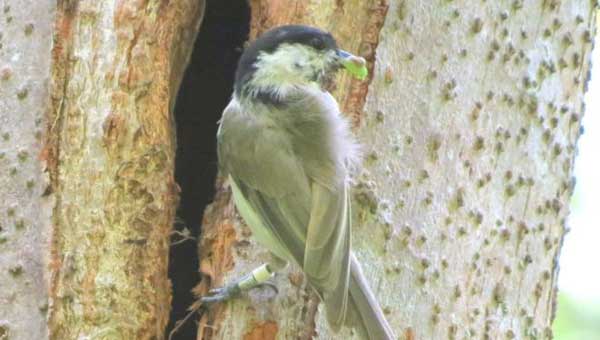
London, UK (BBN) - Conservationists cannot consider nest-boxes to be a substitute for naturally occurring tree cavities, a study has suggested.
A study found the artificial nesting sites had higher humidity levels and poorer insulation than tree cavities, reports BBC.
Researchers also found some species, such as great tits, favoured nest-boxes while others, such as marsh tits, favoured naturally available sites.
The findings are reported in the Forest Ecology and Management journal.
The team of scientists from Wroclaw University, Poland, and the Centre for Ecology and Hydrology, UK, wanted to produce data that highlighted the anecdotal evidence between tree cavities and nest boxes.
"The main message from the study is that nest-boxes cannot replicate tree cavities," explained co-author Marta Maziarz.
"The microclimate - the temperature, humidity and insulation - from outside conditions is different. The nest-boxes do not insulate well but they are generally warmer and they are drier."
She told BBC News: "They are not bad; they are just different. This has consequences for the birds."
Dr Maziarz outlined some of the consequences: "Because the boxes do not insulate so well, birds are exposed to more extreme temperature. This can be important especially in very hot or very cold climates.
"Also, nest-boxes are humid so chick may be dehydrated, and the boxes may attract insects or parasites, which may compete with birds for nesting sites."
She added that the dry microclimates of the artificial nesting sites resulted in the accumulation of material, so they need to be cleaned out in order to allow the sites to be occupied by other birds.
NATURAL SPRING CLEAN
Dr Maziarz said this issue did not arise in tree cavities: "The nest areas are cleaned naturally so they are once again ready to be occupied by birds in the next spring.
However, she explained that the more exposed nature of tree cavities meant that they were vulnerable to being soaked, resulting in nest being lost.
The team carried out their study in two woodlands, One located in Poland, the other in the UK.
The researchers explained that nest-box sites were favoured by some species, such as great tits. And nest-boxes used in conservation projects had resulted in population recoveries, such as recorded in barn owls.
"However, others species such as marsh tits use mainly tree cavities, even when we place next boxes that mimic tree cavities. Different species behave in different ways."
She went on to conclude that it would not be fair to describe tree cavities as providing better nesting sites than next-boxes.
"They are completely different, and this is the point," she explained.
"From a conservation viewpoint, it is better in the longer term to protect mature trees that contain a lot of cavities because this provides more efficient nesting sites - tree cavities clean themselves. Tree cavities are also diverse and offer potential sites to many different species and animals, such as bats.
"However, nest-boxes could be used over a short timeframe," Dr Maziarz observed.
"There are some records of population recoveries of species, such as pied flycatchers or barn owls, that benefitted from the use of nest-boxes.
"So it is good to put out nest-boxes when there are no cavities, but you can't treat nest-boxes as a replacement panacea for the lack of nest sites."
BBN/SK/AD